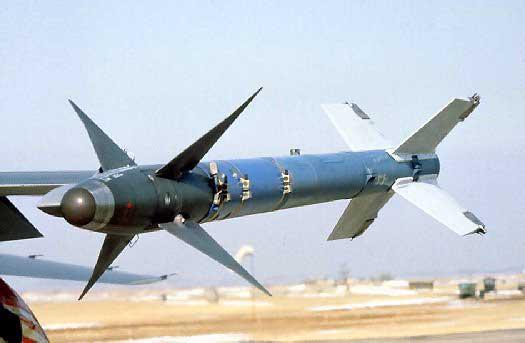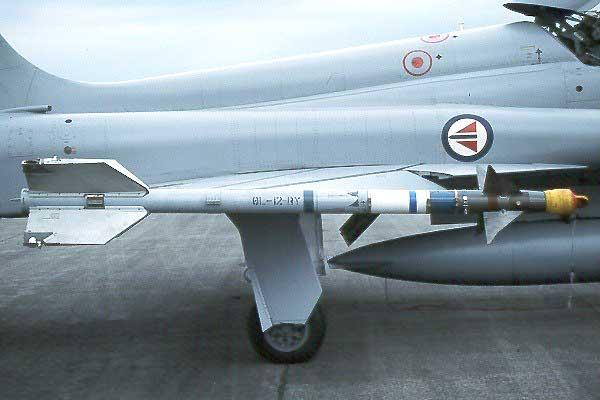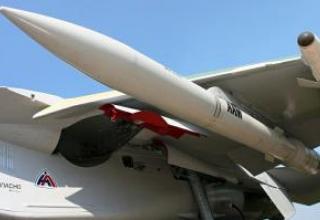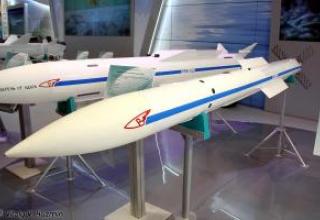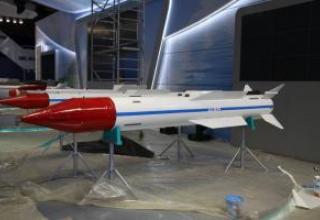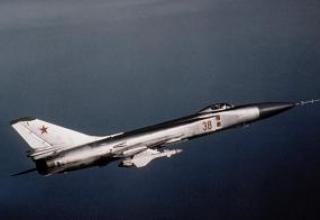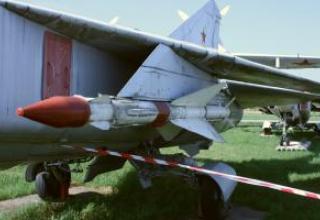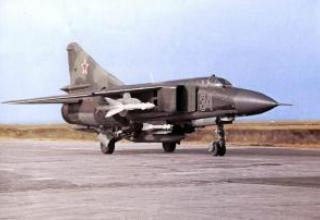The Vietnam War showed low efficiency, all modifications of Sidewinder missiles. The use of these missiles imposed significant limitations on the maneuverability of the carrier aircraft. To hit the target, maneuvering with a large overload, was quite difficult.
The new missile AIM-9L Sidewinder was developed since 1971 under a joint program of the U.S. Air Force and Navy, and in 1976 after the end of flight tests was adopted for service. Compared to previous modifications, it has significantly better combat performance. This was achieved due to the improvement of almost all blocks of the missile while maintaining the weight and dimensions of the AIM-9N boosters.
AIM-9L can be used on almost all modern US Air Force and Navy aircraft: A-10, F-4, F-14, F-15, F-16, F/A-18, Tornado, Sea Harrier and Hawk.
AIM-9L is designed for use in good weather conditions and mainly during daylight hours.
Composition:
Like the early modifications, the AIM-9L is made according to the aerodynamic scheme "duck". It has a cylindrical body with a diameter of 127 mm and cross-shaped trapezoidal in plan wing. At the rear edges of the wing's cantilevers are installed rollers that provide restriction of the angular velocity of the missile rotation relative to the longitudinal axis.
The missile has a passive infrared CNS, consisting of the following main elements:
- magnesium fluoride fairings,
- a rotating optical system mounted on a gyroscope rotor,
- radiant energy receiver - an antimony indium detector (AIM-9H used a detector made of sulfur lead),
- a modulating disc in the focus plane of a linear system, with which the target image is projected onto the receiver,
- of the cryogenic photoresistance cooling system. Argon, which is used in this system, is in a cylinder placed in the rocket body, which makes it possible to hang it on the aircraft without refining their launchers (in earlier modifications of Sidewinder missiles cylinders were in the launchers on the aircraft carriers).
The CNS has a significantly higher sensitivity and the ability to capture targets not only from the rear but also from the front hemisphere. Another improvement is an increase in the maximum angle of deflection and tracking speed of the target coordinator. To increase the noise immunity of the CNS, its field of view is reduced.
The maximum angular tracking speed of the CNS coordinator is 20 degrees/sec, the maximum bearing angle is ± 40°, and the blind spot relative to the Sun is ± 5°. Frequency of view is 125 Hz. Indication of target acquisition by the CNS is made by an audible signal.
The electronic circuitry of the AIM-9L is widely used. As with the AIM-9H, a thermal battery is used as an electrical generator in the missile, but a more powerful drive is used, resulting in increased maneuverability of the missile.
Battle unit of AIM-9L rocket of shrapnel-rod type . It has two layers of notched steel rods to form fragments of a given weight. The detonation is carried out by initiating pulses from the fuse simultaneously on both ends of the explosive charge, which makes it possible to form a flow of fragments accordingly.
The use of the new combat unit required an increase in the accuracy of the signal output for its detonation, so the infrared fuse created for the AIM-9H was upgraded. In addition, a new laser non-contact fuse has been developed. Its main elements are the transmitting and receiving parts. The laser energy transmitter uses a diode based on the gallium arsenide, while the signals reflected from the target are received by a silicon photodiode.
As a result of the work on improving the solid fuel engine has been increased the time of its operation and the total impulse (up to 40 s due to the use of a larger size checker).
Characteristics:
| Body diameter, mm | 127 |
| Length, mm | 2870 |
| Wingspan, mm | 630 |
| Range, km | 18 |
| Speed, M. | 2,5 |
| Start weight, kg | 86 |
| Weight BC, kg | 8,32 |
| Maximum media overload at startup, g | 7 |
Testing:
Despite the declared high effectiveness of HARM missiles of early modifications can not be considered a modern high-precision weapon because they do not have a full-fledged recognition system "insider". Thus, for example, during Operation Desert Storm, the U.S. Air Force could not always effectively use HARM missiles because the Iraqi air defense facilities, along with Soviet-made systems (against which the use of this type of missiles is calculated) included American Hawk systems.
Sources:
- Зарубежное военное обозрение. №1.78
- AIM-9 Sidewinder
- The Sidewinder Story
- AIM-9 SIDEWINDER Семейство управляемых ракет малой дальности
- Виртуальный авиационный справочник "Уголок неба"
